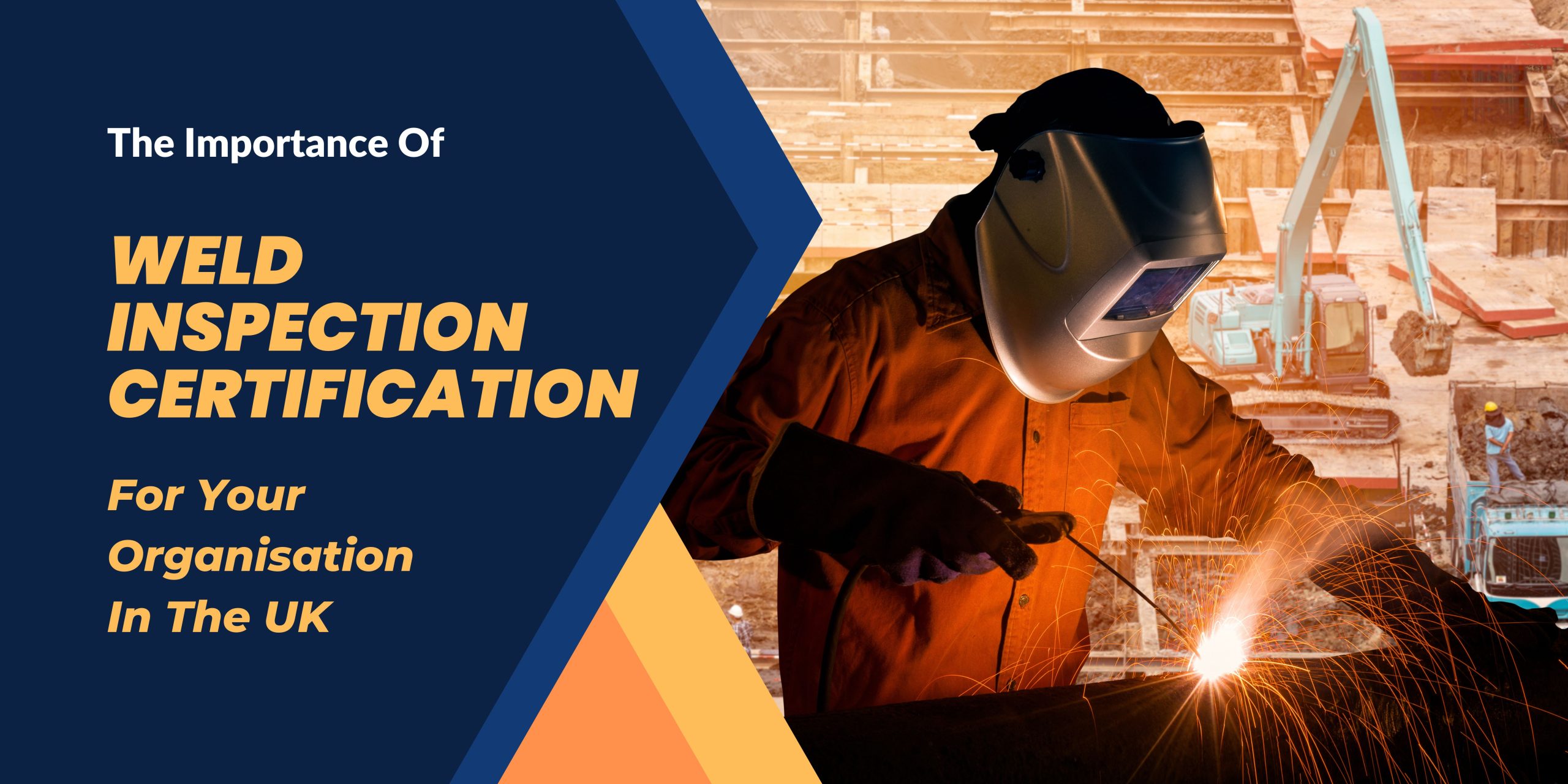What to Anticipate from a Comprehensive Welding Inspection Racine
Wiki Article
Ingenious Techniques to Fillet Weld Examination and Screening: Enhancing Weld Top Quality and Conformity Standards
In the world of welding, the quality and integrity of fillet welds play an essential function in guaranteeing the architectural strength and reliability of different industrial parts. With the constant drive for boosted effectiveness and compliance with rigid standards, the expedition of ingenious methods to fillet weld inspection and screening has come to be vital.Advanced Non-Destructive Testing Techniques
Making use of advanced technologies, advanced non-destructive testing methods play a vital duty in guaranteeing the integrity and top quality of fillet welds. These approaches, such as phased array ultrasonic screening (PAUT) and magnetic particle testing (MPT), offer comprehensive insights into the weld's inner framework without creating any damages to the material. PAUT, as an example, uses numerous ultrasonic elements to examine the weld from numerous angles, providing a thorough visualization of potential flaws like absence of fusion or fractures.In A Similar Way, MPT is effective in finding surface-breaking issues by applying an electromagnetic field and iron fragments to the weld area. This method is especially valuable for recognizing suspensions that might endanger the weld's toughness. By using these sophisticated non-destructive screening techniques, weld examiners can properly analyze the quality of fillet welds, guaranteeing compliance with market requirements and regulations. The capability to discover problems beforehand not just boosts weld top quality yet additionally protects against pricey rework or failings in architectural honesty, underscoring the value of these cutting-edge screening techniques in welding assessments.
Robotics and Automation in Assessment
The integration of robotics and automation has actually reinvented the evaluation procedure for fillet welds, improving efficiency and precision in high quality assessment. Robotics use accurate control and repeatability in inspecting welds, making sure consistent and reliable outcomes. Automated systems can be configured to follow certain evaluation courses, guaranteeing thorough insurance coverage of welds and reducing the threat of human error.Robot evaluation systems outfitted with sophisticated sensing units can spot and gauge weld features with high precision, giving comprehensive information for evaluation. These systems can identify issues such as cracks, lack of blend, and porosity, enabling timely rehabilitative actions to be taken. Additionally, robotics and automation permit for real-time information collection and evaluation, supplying immediate comments to drivers and assisting in quick decision-making processes.
Furthermore, using robotics and automation in fillet weld examination improves overall productivity by decreasing assessment times and raising inspection throughput. By improving the assessment procedure, suppliers can ensure weld quality and conformity requirements are satisfied effectively, eventually bring about set you back financial savings and boosted item top quality.
Making Use Of Artificial Intelligence for Evaluation
Expert system plays an essential duty in boosting the performance and precision of evaluation in fillet weld assessment procedures. By utilizing the power of AI, inspectors can enhance the analysis of weld top quality and compliance standards, leading to more reliable and precise results. AI formulas can swiftly refine large amounts of information from weld examinations, identifying issues or inconsistencies that might be testing to determine with the naked eye. This innovative modern technology allows real-time monitoring of weld quality, permitting instant corrective activities to be taken if any type of issues are detected.Furthermore, AI systems can find out from past assessment information, constantly enhancing their capacity to identify prospective defects and discrepancies in fillet welds. This flexible learning capability improves the total quality control process, minimizing the likelihood of human error and making sure that welds fulfill the required standards. By integrating expert system right into fillet weld analysis, industries can accomplish higher degrees of performance, uniformity, and conformity in their inspection practices.
Portable Equipment for On-Site Assessment
 Enhancing area assessment performance, the adoption of mobile devices reinvents on-site evaluation processes for fillet welds. These devices use adaptability and convenience, permitting examiners to carry out extensive examinations in different places, including remote or challenging settings. Portable devices such as ultrasonic testing devices, magnetic particle evaluation devices, and digital radiography systems offer real-time data and high-resolution imaging capabilities, enabling quick decision-making and immediate feedback on weld quality.
Enhancing area assessment performance, the adoption of mobile devices reinvents on-site evaluation processes for fillet welds. These devices use adaptability and convenience, permitting examiners to carry out extensive examinations in different places, including remote or challenging settings. Portable devices such as ultrasonic testing devices, magnetic particle evaluation devices, and digital radiography systems offer real-time data and high-resolution imaging capabilities, enabling quick decision-making and immediate feedback on weld quality.have a peek here One substantial benefit of mobile devices is their capability to simplify evaluation procedures, decreasing downtime and enhancing total performance. Assessors can conveniently deliver these devices to different job websites, removing the requirement for carrying heavy machinery or parts to off-site centers. Furthermore, the portability of these devices advertises cost-effectiveness by lessening transportation expenses and increasing assessment timelines.
Furthermore, the use of mobile tools for on-site assessment promotes proactive quality assurance procedures, as inspectors can without delay determine and address any kind of prospective welding defects or disparities. By incorporating these cutting-edge modern technologies right into on-site examination methods, welding experts can guarantee compliance with sector requirements and boost weld high quality, inevitably bring about boosted structural integrity and safety and security in numerous welding applications.
Combination of Data Management Equipment
Having enhanced on-site examination processes with the utilization of portable devices, the following stage involves the smooth assimilation of data administration systems to better enhance effectiveness and data evaluation capabilities in fillet weld assessment and screening. Welding Inspection Racine. By integrating information monitoring find here systems right into the evaluation process, companies can simplify data collection, storage, and analysis. This combination permits real-time surveillance of weld quality, immediate recognition of defects, and prompt decision-making to correct any type of problems that might emerge during the inspection process
Data administration systems play a critical duty in systematizing evaluation data, assisting in very easy accessibility for accredited employees, and making certain information honesty and protection. Via the have a peek at this website assimilation of these systems, assessors can produce detailed records, track historical data for trend analysis, and improve total procedure effectiveness. Moreover, the combination of data management systems enables smooth communication in between different stakeholders associated with the assessment procedure, cultivating partnership and improving overall top quality control actions. Eventually, the integration of data monitoring systems offers to raise the requirements of fillet weld assessment and screening, making certain compliance with sector regulations and boosting weld quality.
Verdict
Finally, ingenious approaches to fillet weld evaluation and screening have actually dramatically improved weld top quality and conformity standards. Advanced non-destructive screening approaches, robotics, automation, expert system, mobile devices, and data management systems have changed the way weld inspections are carried out. By using these technologies, markets can ensure that welds fulfill the required high quality requirements and laws, inevitably improving overall efficiency and security in welding procedures.
By employing these advanced non-destructive screening techniques, weld examiners can accurately assess the quality of fillet welds, ensuring compliance with market requirements and policies. Mobile devices such as ultrasonic screening tools, magnetic particle assessment tools, and electronic radiography systems provide real-time information and high-resolution imaging capacities, making it possible for fast decision-making and instant feedback on weld quality.
Having actually enhanced on-site inspection processes via the application of portable tools, the following stage includes the seamless assimilation of information administration systems to even more enhance performance and information evaluation capacities in fillet weld examination and screening (Welding Inspection Racine). Ultimately, the integration of information administration systems serves to boost the requirements of fillet weld inspection and screening, ensuring compliance with industry laws and enhancing weld top quality
 In final thought, ingenious approaches to fillet weld examination and screening have significantly improved weld quality and conformity requirements.
In final thought, ingenious approaches to fillet weld examination and screening have significantly improved weld quality and conformity requirements.Report this wiki page